High-quality identification cards
Introduction: The Importance of High-Quality Identification Cards
Identification cards are an integral part of our daily lives. Whether it’s for gaining access to a building, verifying identity, or securing transactions, high-quality identification cards have become indispensable. These cards aren't merely pieces of plastic with names and photos; they are sophisticated, highly secure products designed to protect both the cardholder and the institution that issues them.
In this comprehensive article, we will delve into the world of high-quality identification cards, analyzing their features, technological advancements, market trends, target audiences, and the specific benefits they offer to businesses, governments, and educational institutions. Whether you're a business owner looking to enhance your security protocols or a government agency seeking more reliable identification solutions, this guide will provide valuable insights.
1. The Evolution of Identification Cards: From Paper to High-Tech Solutions
Over the decades, identification cards have undergone significant changes. Initially, IDs were simple, paper-based documents with minimal security features. As the need for secure and tamper-proof identification grew, plastic cards with magnetic strips, barcodes, and other rudimentary security elements became the norm.
Today's high-quality identification cards are far more sophisticated. Many include embedded RFID (Radio Frequency Identification) chips, biometric data storage, holographic images, and advanced printing techniques to ensure maximum security. These innovations not only make the cards harder to forge but also open up new functionalities, such as automated access control, secure transactions, and personalized data storage.
Key technological advancements in the ID card industry:
- RFID and NFC Technology: Cards embedded with RFID or Near-Field Communication (NFC) chips allow for contactless data exchange, enhancing security and user convenience.
- Smart Card Integration: These cards can store complex data, like encrypted personal information or biometric data, making them ideal for secure environments.
- Advanced Printing Techniques: Technologies such as UV printing, microtext, and holography ensure that high-quality identification cards are tamper-proof and durable.
2. Features of High-Quality Identification Cards
High-quality identification cards boast a range of features that distinguish them from basic ID solutions. These features not only enhance security but also provide additional functionalities that make them versatile tools for modern organizations.
2.1 Durability and Longevity
The use of high-quality materials such as polycarbonate or PVC ensures that identification cards are durable, resistant to wear and tear, and can last for several years. This makes them a cost-effective solution for organizations that need reliable ID cards that won't require frequent replacement.
2.2 Customization Options
From holographic overlays to specific color schemes and logos, high-quality identification cards can be fully customized to reflect a company or institution’s branding. This creates a professional appearance while also ensuring that the cards are difficult to duplicate.
2.3 Security Features
The primary purpose of an identification card is security. High-quality ID cards come equipped with multiple layers of protection, including:
- Holographic Imaging: Adds a 3D effect that is difficult to replicate.
- Embedded Microchips: Can store sensitive information and encrypt personal data.
- UV Printing: Invisible under normal light but visible under UV, adding an extra layer of security.
- Biometric Data Integration: Cards can store biometric data such as fingerprints, retina scans, or facial recognition data.
2.4 Multi-functionality
Modern high-quality identification cards are often multi-functional. Beyond serving as proof of identity, they can be used for:
- Access Control: Granting or restricting access to facilities or certain areas.
- Time and Attendance Tracking: Employees can use the cards to clock in and out of work.
- Payment and Transactions: In campus or corporate environments, ID cards can be used to make purchases at cafeterias or vending machines.
3. Market Analysis: Demand for High-Quality Identification Cards
The market for high-quality identification cards has experienced steady growth over the last decade, driven by increasing security concerns and technological advancements. Several industries now rely on these cards as integral components of their security systems.
3.1 Global Growth Trends
- The global market for identification cards is expected to grow at a compound annual growth rate (CAGR) of approximately 8.9% from 2023 to 2030.
- This growth is fueled by the increasing demand for secure access control systems in both public and private sectors, particularly in developing countries.
3.2 Key Industry Drivers
- Security Threats: With the rise in cyber and physical threats, organizations are investing more in secure identification systems to protect their assets and personnel.
- Government Initiatives: Many governments are issuing smart identification cards that contain biometric and digital information, further propelling demand.
- Technological Innovations: As ID card technologies such as RFID, NFC, and biometrics continue to improve, more businesses are adopting these high-quality solutions.
3.3 Major Sectors
- Corporate: Companies need high-quality ID cards for employee access control, attendance management, and enhancing corporate security.
- Government: Governments around the world are increasingly adopting smart ID cards for citizens, offering enhanced security and functionality for services such as voting, health care, and social services.
- Education: Universities and schools utilize ID cards for both students and staff, with functionality ranging from access control to payment systems.
- Healthcare: Hospitals and clinics rely on high-quality ID cards for secure patient identification, access to medical records, and staff management.
4. Target Audience: Who Benefits from High-Quality Identification Cards?
4.1 Corporations and Businesses
For companies, high-quality ID cards are critical tools for improving security, managing access, and enhancing employee identification systems. Many corporations use customized ID cards integrated with security systems to grant access to various facilities. This helps streamline operations while ensuring that only authorized personnel can enter restricted areas.
Additionally, high-quality ID cards can act as a form of branding, with logos, colors, and design elements that reinforce the company’s image.
4.2 Government Agencies
Government agencies are some of the largest users of high-quality identification cards. These cards are often used for national ID systems, voting, and other official purposes where security and reliability are paramount. Smart ID cards, in particular, have gained popularity as they can store personal information securely and facilitate electronic services.
4.3 Educational Institutions
Colleges and universities frequently issue high-quality identification cards to students, faculty, and staff. These cards often serve dual purposes: they provide identification and act as access cards to dormitories, libraries, and other campus facilities. They can also be integrated into payment systems for use in campus stores and cafeterias.
4.4 Healthcare Providers
In the healthcare sector, secure and reliable identification is crucial. High-quality ID cards ensure that patients are correctly identified, allowing for proper access to medical records, insurance information, and other sensitive data. Healthcare providers also use these cards to track staff access to different areas, maintaining a secure environment in hospitals and clinics.
5. The Role of Innovation in Identification Card Solutions
Innovation has played a critical role in the development of high-quality identification cards. With new security threats emerging every day, the need for robust and adaptable ID solutions is more pressing than ever.
5.1 Smart ID Cards
Smart ID cards are the latest evolution in the ID card space. These cards contain microprocessors or memory chips capable of storing large amounts of data securely. For organizations, smart cards are useful for:
- Storing encrypted personal information
- Facilitating secure logins to computers and networks
- Enabling secure access to buildings and facilities
5.2 Biometric Integration
Biometric data has become a popular addition to high-quality identification cards. By linking the card to biometric markers such as fingerprints, retinal scans, or facial recognition, organizations can ensure that the person using the card is indeed the cardholder. This adds an additional layer of security beyond what is possible with traditional ID cards.
5.3 Mobile Integration
With the rise of smartphones, some high-quality ID systems have begun integrating mobile capabilities. These hybrid systems allow users to authenticate themselves either via a physical ID card or a mobile app, providing greater flexibility and security. This trend is particularly popular in corporate environments, where employees may need to access secure areas quickly and conveniently.
6. The Future of High-Quality Identification Cards
As technology continues to evolve, the future of high-quality identification cards will likely see further innovation in areas such as blockchain technology, AI-driven authentication, and contactless solutions. These advancements will address the growing need for secure, efficient, and user-friendly ID systems.
6.1 Blockchain for Secure Identity Management
Blockchain technology has the potential to revolutionize identity management. By creating decentralized, tamper-proof databases, blockchain can be used to store and verify identity data securely. High-quality identification cards could leverage blockchain to offer a more secure and transparent method of identity verification.
6.2 AI-Powered Authentication
Artificial intelligence (AI) could play a significant role in enhancing the security and functionality of ID cards. AI-driven facial recognition and behavioral biometrics are already being used in some sectors to provide real-time authentication, ensuring that only the correct individuals have access to certain areas or data.
6.3 Contactless Solutions
The COVID-19 pandemic accelerated the shift toward contactless solutions. As more organizations adopt contactless technologies, the demand for high-quality identification cards with RFID and NFC capabilities will continue to grow.
Conclusion: Why High-Quality Identification Cards Are a Smart Investment
High-quality identification cards offer a range of benefits to businesses, governments, and institutions. Their durability, advanced security features, and customizable design make them indispensable tools for modern security and identification systems. By investing in these cards, organizations can improve their security, enhance operational efficiency, and create a professional image that resonates with both employees and clients.
As the world continues to prioritize security and innovation, high-quality identification cards will remain at the forefront of these efforts. Whether you're a corporation seeking to streamline access control or a government agency looking to secure sensitive data, these cards offer the best solution for today’s complex and evolving security landscape.
 Utah driver's license
Utah driver's license
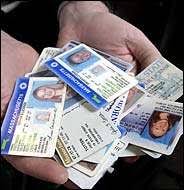 customized fake IDs
customized fake IDs
 target audience for fake IDs
target audience for fake IDs
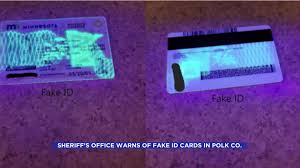 counterfeit identification
counterfeit identification
 fake ID laws
fake ID laws
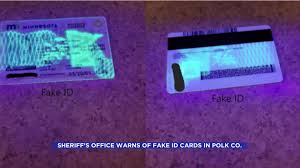 Fake University Cards
Fake University Cards
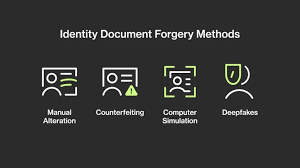 ISS number on a fake ID
ISS number on a fake ID
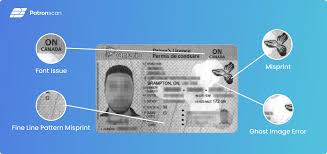 Fake ID market analysis
Fake ID market analysis
